Terminal stations had the main problem that all trains had to get in and out at the same side of the station, reducing efficiency considerably. A much more efficient solution are through stations, sometimes also called RoRo (Roll On, Roll Off). This means that trains enter the station at one side and leave it on the other one. All the designs highlight various aspects of through stations, and some of these designs should be combined to get the best results.
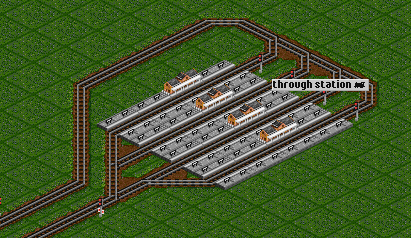
Signalling a through station is pretty straightforward. In front of the station there is a one-way path signal, which regulates entry to the platforms and prevents trains from going back that way. Trains wait at this signal when all platforms are blocked. On the exit side, standard path signals are used to regulate traffic.
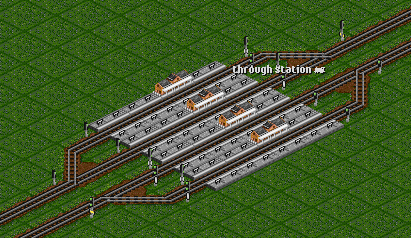
This setup is common for double track layouts. One could also use path-based signals, but they would only give a tiny advantage on the entry side.
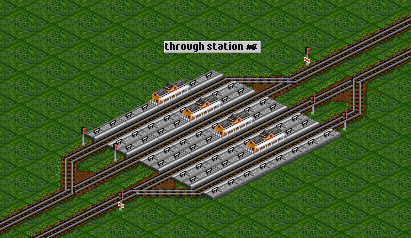
A through station at a double-tracked line can be built following the same scheme. In front of the station there is a one-way path signal, behind the platforms there are standard path signals.
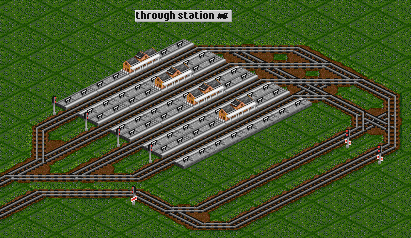
In case a station is heavily trafficked, it might be useful to build a "waiting area" in front of it, so trains can wait there for a free platform. Signalling is realized using standard path signals just like in the other examples.
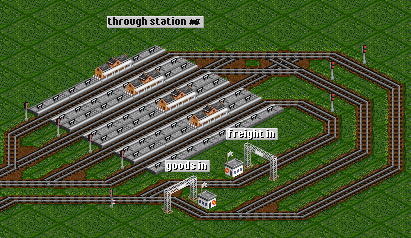
If there are trains that collect produced goods and other trains bringing raw material supplies, one should take care that the latter goup always has access to a platform. Otherwise the whole station might get blocked by waiting trains, effectively shutting down production as no supplies can be delivered. One can use waypoints to ensure correct routing, trains carrying raw materials go through waypoint "freight in", the others enter through waypoint "goods in".
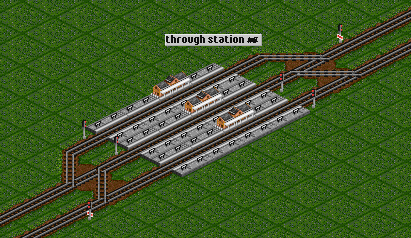
Platforms which are to be used in both directions are easily created using path. In this example, the middle platform can be used in both directions, the outer platforms are only used in one direction each, with the signalling corresponding to the standard through station layout. The platform in the middle has path signals at either end. A train can reserve a path through the signal into the platform. After loading, it waits at the signal and reserves a path out of the station. This works in both directions and also if trains are allowed to reverse at stations.
